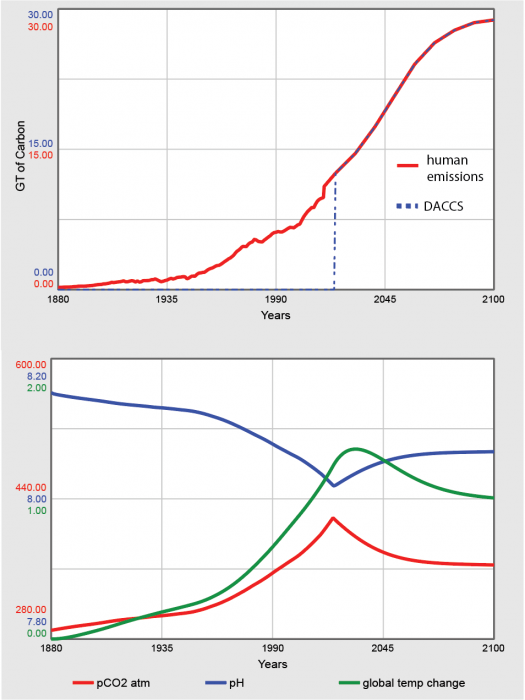Direct Air Capture and Carbon Sequestration (DACCS) Continued
The figure below shows the results of a little experiment where a DACCS system is added to a global carbon cycle model to show what would happen if, starting in 2020, we began to remove carbon through DACCS to match the carbon emissions from burning fossils. The model begins in 1880 and runs up to 2014 using the actual human emissions of carbon, and then switches to a projection made by the IPCC for future carbon emissions.
The upper panel shows the gigatons of C from human emissions and the gigatons of C removed by DACCS, which begins in the year 2020. The lower panel shows how this change affects the global temperature change (green, in °C relative to the start), the atmospheric CO2 concentration (red, in parts per million), and the ocean pH, which is inversely related to the acidity).

If we continue to burn fossil fuels as we have been (the scenario shown in the figure above), the cost of using DACCS to negate the emissions would be immense — a total of perhaps \$600 trillion by the end of the century. But if we also make drastic reductions in our carbon emissions, the cost of DACCS would be more manageable. This raises an important point — the cheapest thing to do is to switch to renewable energy (mainly wind and solar) and thus dramatically reduce our emissions. And, as we will see later, less money spent on geoengineering means more money to be spent on things like education, healthcare, and other things that improve our quality of life.
